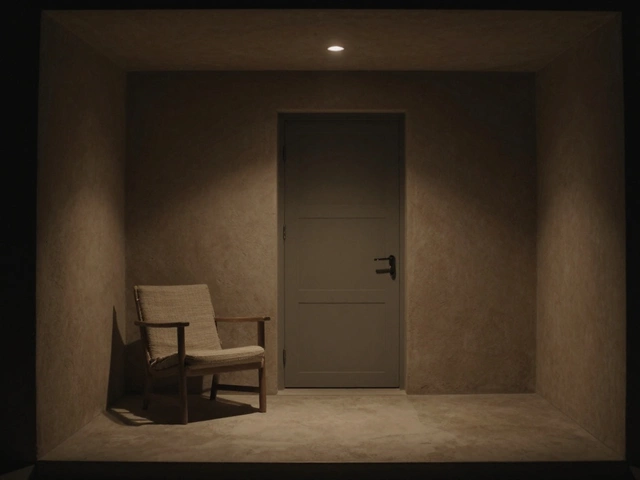Threats Trigger Shutdowns at Virginia HBCUs
Two Virginia campuses went quiet in a hurry on Thursday, Sept. 11, 2025, as threats forced Virginia State University and Hampton University to suspend operations. Both schools moved fast to protect students and staff, part of a broader set of HBCU threats reported the same day across several states.
Virginia State University closed its campus outright while police and federal agents investigated. The university told students to stay indoors and monitor official alerts. Employees shifted to remote work, and anyone off campus was told not to come in. VSU did not release details about the threat, but its message was clear: safety first, updates to follow.
Hampton University canceled non-essential operations for two days, covering Thursday and Friday. Classes, athletics, and events were off the calendar. Non-essential faculty and staff were asked to leave, while students living on campus were urged to stay put unless they had an urgent reason to move. The university increased its police presence and repeated the basic rule of campus safety: if you see something, say something.
Virginia was not alone. Alabama State University, Southern University in Louisiana, Clark Atlanta University, and Spelman College also enacted lockdowns and emergency protocols after similar threats arrived. Alabama State shut down activities and told everyone to remain indoors or away from campus. Southern University locked down its Baton Rouge landmass, including the Law Center. After lifting that lockdown later in the afternoon, the school still canceled classes and campus events through the weekend.
The FBI said on Thursday that it is aware of hoax threat calls aimed at historically Black institutions. Agents stressed they treat every threat seriously because they put people at risk, even when there is no current information pointing to a credible plan. That phrase matters: no credible threat, for now. But until investigators are sure, campuses tend to err on the side of caution.
Here’s a snapshot of each campus response based on what schools shared Thursday:
- Virginia State University: Full campus closure; students told to shelter; employees working remotely; off-campus community asked to stay away.
- Hampton University: Non-essential operations paused for Sept. 11–12; classes and events canceled; heightened police presence; students encouraged to remain in place.
- Alabama State University: Complete lockdown; activities suspended; students and staff instructed to stay indoors or avoid campus.
- Southern University (Louisiana): Lockdown across the Baton Rouge landmass, including the Law Center; lockdown later lifted; classes and campus activities canceled through the weekend.
- Clark Atlanta University and Spelman College: Emergency protocols and lockdown measures enacted in response to threats.
As investigations play out, schools are juggling two priorities: keeping people physically safe and calming a community that’s tired of false alarms that still feel real.
A Wider Pattern and What Comes Next
If this feels familiar, that’s because it is. HBCUs have faced waves of threats in recent years, including large clusters in 2022 and 2023. Many turned out to be hoaxes or “swatting”-style calls designed to trigger a heavy police response. Still, those calls upend campus life. They shut down labs and libraries, cancel games and performances, and rattle families waiting for their kids to text back.
When these threats hit, universities typically follow a tight playbook. First comes an emergency alert, often via text, email, and app notification. Campus police lock down buildings or the full campus. Local and state law enforcement step in, and the FBI’s Joint Terrorism Task Forces monitor for patterns—same caller, same phrases, same spoofed numbers. Bomb squads and K-9 units may sweep key buildings. Only after those checks do schools begin a gradual reopening, sometimes in phases.
That approach is visible in Virginia this week. VSU opted for a clean shutdown to reduce the variables while investigators worked. Hampton extended its pause through Friday, a sign it wants to complete sweeps, review security posture, and give students and employees a reset before activities restart.
For students, the adrenaline fades and a different stress sets in. Even when there’s no credible device or attacker, the what-ifs linger. Universities often extend counseling hours, hold forums with campus police, and bring in outside experts to answer questions. Those sessions aim to lower anxiety, fight rumors, and explain how “threat credibility” is assessed.
How do investigators evaluate a threat? They start with the details: specific locations, language used, prior patterns, and whether a caller references information that wasn’t public. They analyze phone metadata, look at call-routing and spoofing tools, and compare the message against known hoaxes. Parallel teams check buildings and public areas so decision-makers can balance probability and consequence. Even a low-probability event gets a serious response when the consequence could be catastrophic.
There’s also a cost. A single shutdown can burn through a day’s worth of classes and overtime hours for police and facilities teams. It can derail athletic schedules and performances. Some students miss shifts or clinical placements. Schools track those losses because they add up across multiple incidents. After previous waves of threats, some campuses used federal emergency and school safety funds to bolster security systems, add cameras and lighting, and expand emergency communications. Others ran joint drills with local police and fire departments to speed building sweeps.
Technology helps, but it doesn’t do the whole job. Clear communication builds trust. Students want straight talk: What triggered the alert? What did police find? When will residence halls and academic buildings reopen? Administrators who share what they can, quickly and consistently, tend to see fewer rumors spread on social media. That’s one reason you’ll see repeated reminders to follow official channels rather than screenshot chains or unverified group chats.
Motive is another sensitive topic. Historically, HBCUs have faced harassment and violence tied to racial animus. Today’s calls may be hoaxes, but the targets are not random. Investigators have not publicly identified a motive in Thursday’s series of calls, and there’s no confirmed link tying all the incidents together. Still, the choice of targets sends a message. That’s why community support—alumni, local faith groups, and civic leaders—often ramps up after these scares.
What happens next in Virginia depends on what investigators find. If law enforcement clears buildings and sees no ongoing risk, schools will phase back in classes and activities, sometimes with temporary ID checks, restricted building access, and extra patrols. Expect to see counseling resources front and center and faculty encouraged to be flexible with attendance and deadlines. Athletic departments will decide game by game, depending on venue sweeps and travel needs.
There are a few markers to watch in the days ahead:
- Reopening timelines: Whether VSU resumes normal operations quickly and whether Hampton keeps its two-day pause or extends it.
- Law enforcement updates: Any public guidance from the FBI or state police about caller patterns, technology used, or referrals to federal task forces.
- Regional coordination: If campuses compare notes and align protocols, especially for events that draw visitors from off campus.
- Policy moves: Renewed discussion around penalties for swatting and interstate threat calls, and whether Congress revisits proposals aimed at deterring hoax threats against schools.
Even with “no credible threat” language from the FBI, these incidents leave a mark. First-years who just moved in have now lived through their first lockdown. Seniors expecting a calm fall semester are back on emergency footing. For families, it’s the anxiety of trying to follow multiple alerts from miles away. The point of the quick shutdowns is to lower the odds of a worst-case scenario and to give investigators time to do their work without crowds and traffic getting in the way.
For now, the basics hold. Check university emails and alert apps, follow instructions from campus police, and avoid spreading unverified claims. If you’re off campus, stay off until you’re told it’s safe to return. If you’re on campus, keep an eye on updates about building access and class status. And if you see something that feels off, report it—every tip helps investigators close the loop faster.
Thursday’s threats put the spotlight back on a reality students and staff know too well: hoaxes can be fake and harmful at the same time. The Virginia campuses moved fast, other HBCUs did the same, and federal agents are now tracing calls and comparing clues. The next updates will come from the universities once searches are complete and law enforcement clears the way for a return to normal.





Tulis komentar